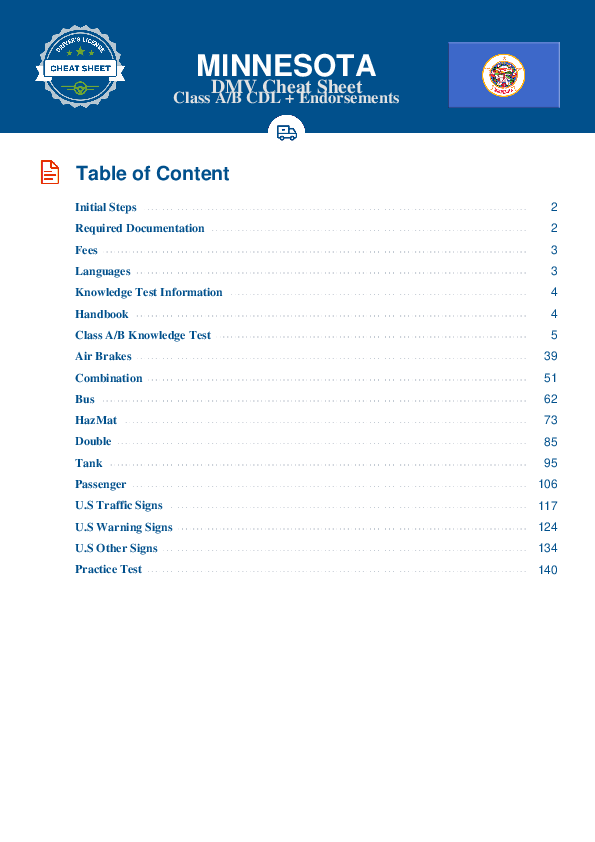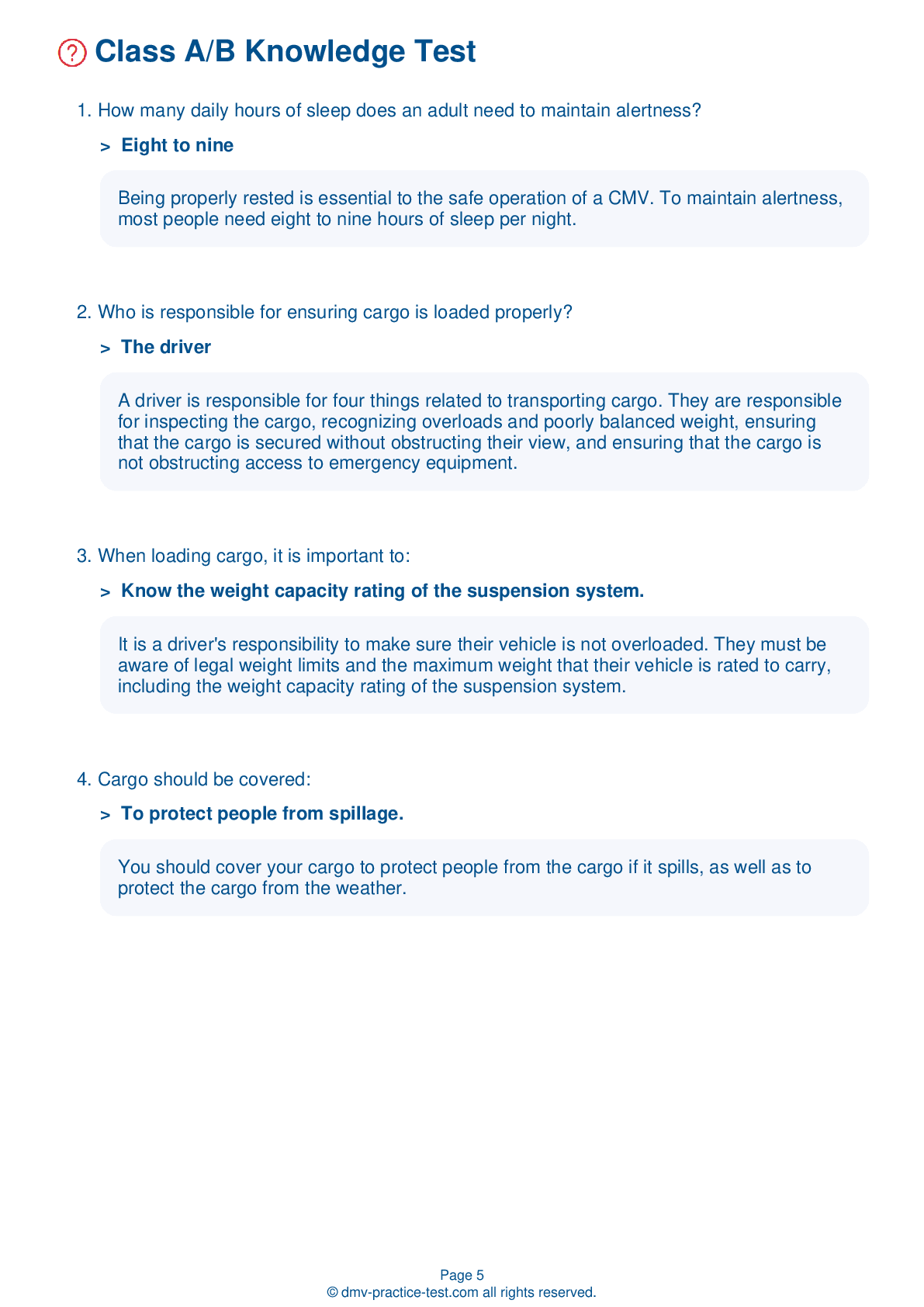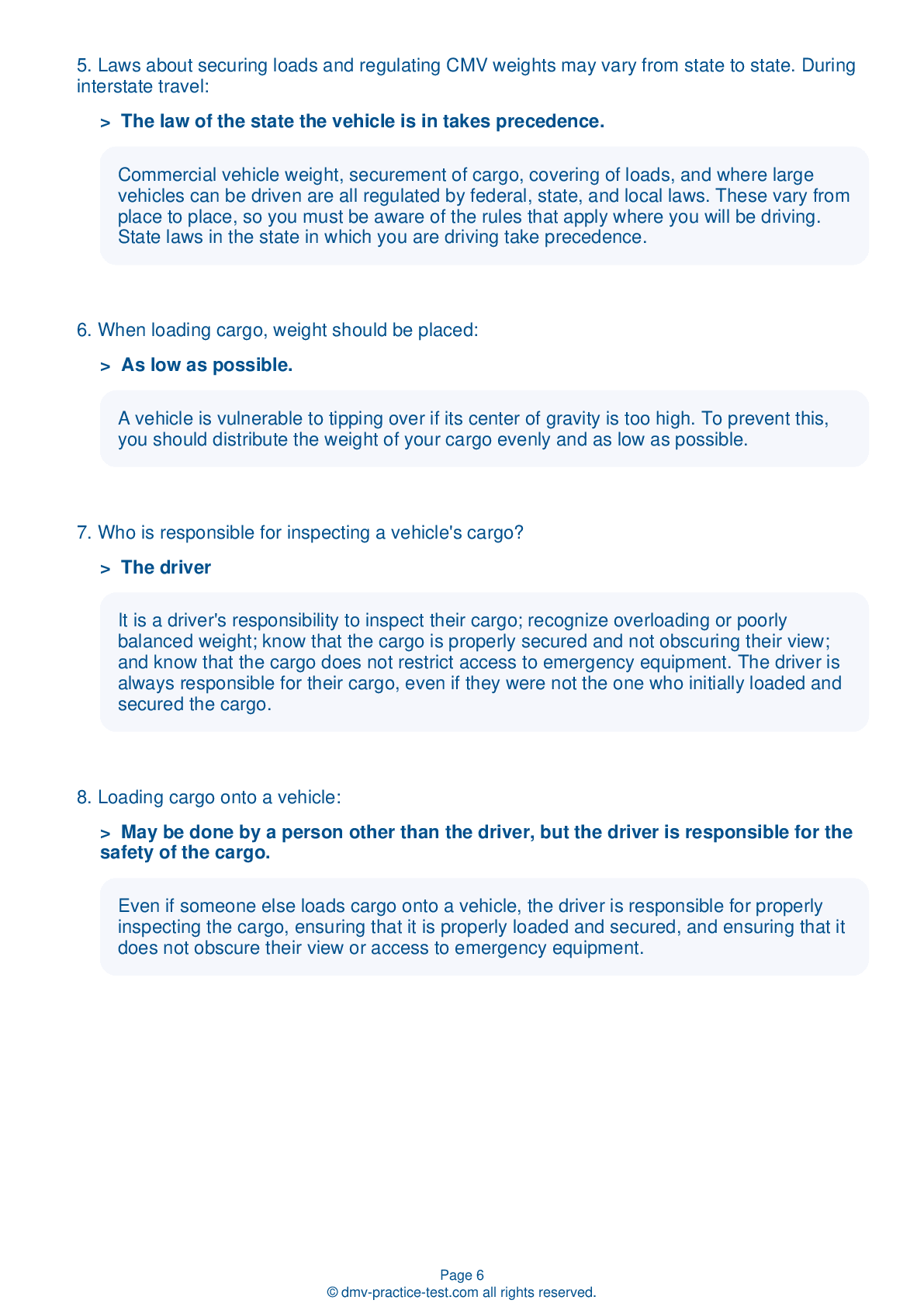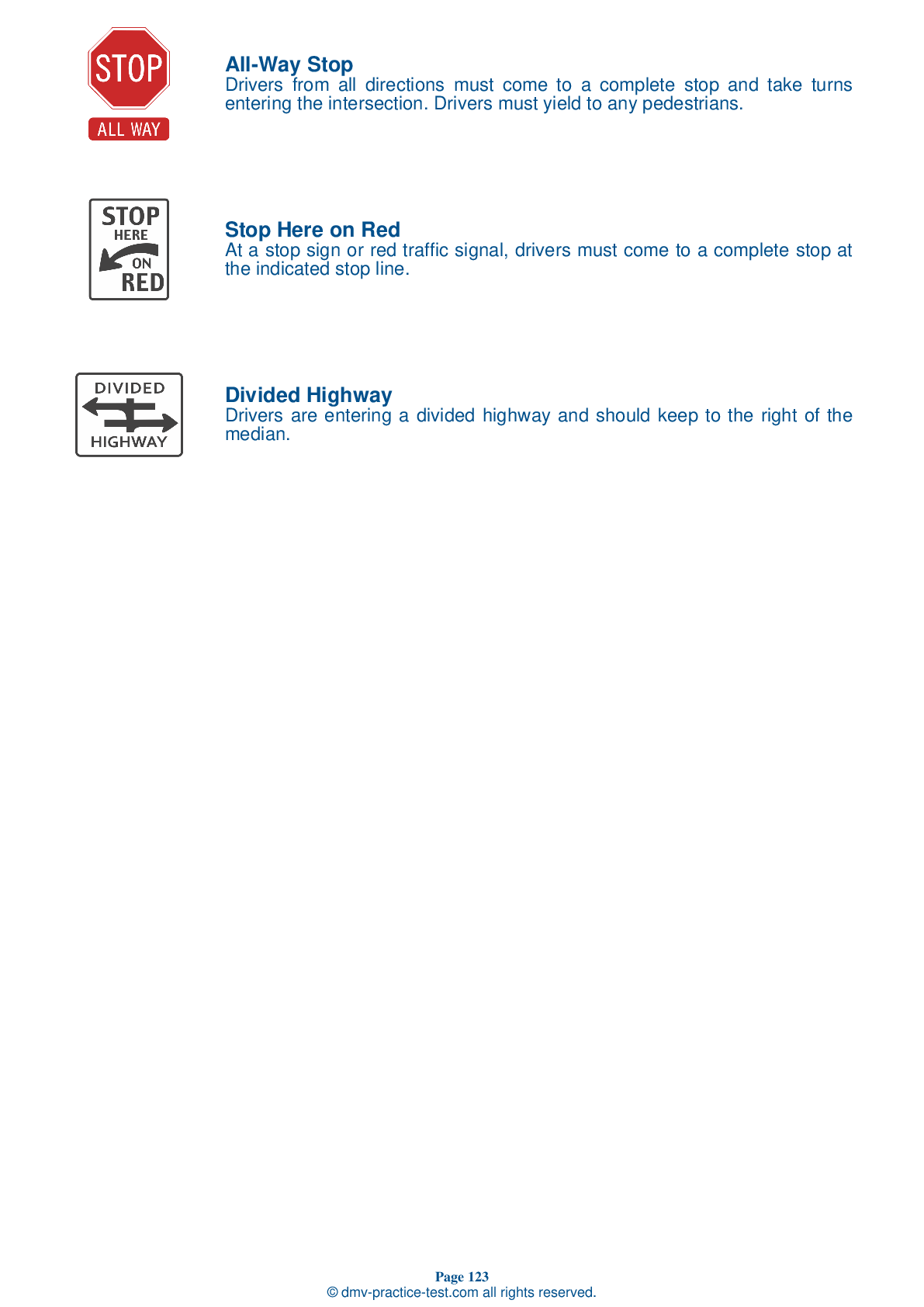Air Brakes #1
Air Brakes Endorsement Test | Minnesota 2025 #1 Page 3 of 4
Train for FREE online with our Minnesota CDL air brake test. The official exam test consists of several obligatory parts, with all of them checking your knowledge of different blocks of road rules. If you need to obtain a MN Class A/Class B driver license in 2025, practice as much as possible. Free sample tests published on our website will help you check and improve your knowledge and boost your grades. Please bear in mind that the requirements for CDL may vary from state to state.
25
20
20
13 . When braking with ABS, you should:
When operating a vehicle with an Anti-Lock Braking System (ABS), you should apply your brakes in the same manner as you would if operating a vehicle without ABS.
14 . Operating a combination vehicle usually requires ____ operating a single vehicle.
Exactly the same level of skill as
Combination vehicles require more skill to drive than single vehicles. Combination vehicles are usually longer and heavier, and are more vulnerable to rollovers.
15 . An alcohol evaporator removes alcohol from the air brake system.
Some air brake systems contain an alcohol evaporator. This device introduces alcohol into the braking system to inhibit the formation of ice.
16 . To help prevent rollovers, you should:
Keep the load on one side of the trailer.
To lower the risk of a rollover, load your cargo as closely to the ground as possible. To further reduce this risk, take curves and corners slowly.
17 . Making a quick lane change while pulling multiple trailers is usually safer than making a quick lane change while pulling only one trailer.
Double and triple combinations are less stable than single commercial vehicles. They are more likely to roll over when being driven with quick movements. Doubles and triples must be driven very smoothly and gently.
18 . Applying the brake pedal causes air pressure to activate an electric switch and:
Turn off the low pressure warning light.
In a vehicle with air brakes, the brake lights are activated when the brake pedal is pushed and air pressure moves an electric switch. With the application of air pressure, the switch will then turn on the brake lights.
2025 Minnesota | Frequently Asked Questions
A CDL Class A license in Minnesota is defined as a commercial driver's license that allows the holder to operate any combination of vehicles with a Gross Vehicle Weight Rating (GVWR) of 26,001 pounds or more, provided the towed vehicle is heavier than 10,000 pounds. It typically covers vehicles like tractor-trailers, truck and trailer combinations, and tank vehicles.
A Class A CDL license in Minnesota allows the holder to operate several types of heavy vehicles. These include tractor-trailers, truck and trailer combinations, tank vehicles, and livestock carriers. The license permits driving any combination of vehicles with a Gross Vehicle Weight Rating (GVWR) of 26,001 or more pounds, provided the towed vehicle exceeds 10,000 pounds.
To obtain a Class A CDL license in Minnesota, one must be at least 18 years old (21 for interstate travel), possess a valid Minnesota driver's license, pass a vision test, and successfully complete a general knowledge test. Additionally, applicants must pass skills tests in the vehicle type that the driver expects to operate. Medical examinations are also typically required.
In Minnesota, you must be at least 18 years old to apply for a Class A CDL for intrastate transport (within Minnesota only). However, federal regulations require drivers to be at least 21 years old to drive commercial vehicles across state lines (interstate transport) or to transport hazardous materials.
While not necessarily required, specific endorsements on a Class A CDL license can expand the types of vehicles you're allowed to drive and the cargo you can carry. These include T for Double/Triple Trailers, P for Passenger Vehicles, N for Tank Vehicles, H for Hazardous Materials, and S for School Buses. Each endorsement requires passing additional tests.
The Class A CDL skills test in Minnesota comprises three parts: pre-trip inspection, basic vehicle control, and on-road driving. The pre-trip inspection checks your ability to assess the condition of your vehicle. Basic vehicle control tests your skills in controlling the vehicle, and on-road driving evaluates your ability to drive safely in various road conditions.
Yes, limitations can be imposed on Class A CDL license holders in Minnesota. These are known as restrictions, and they limit the type of vehicle you can operate or require you to use certain equipment. Examples include 'E' for no manual transmission, 'K' for intrastate only, 'L' for no air brake equipped CMV, 'M' and 'N' for class of vehicle restrictions, and 'O' for no tractor-trailer CMV.
Yes, in Minnesota, the written Class A CDL test can be taken in several languages besides English. These include Spanish, Hmong, Vietnamese, Russian, and Somali. However, the state requires that all CDL holders be able to read and speak English well enough to converse with the general public, understand highway traffic signs and signals, respond to official inquiries, and make entries on reports and records.
Yes, Minnesota allows accommodations for the Class A CDL written test for individuals with disabilities. You need to make this request in advance when scheduling your test. Accommodations can include more time to take the test, a separate room, or having the test read aloud. However, all requests are subject to approval and must comply with federal regulations.
Yes, if you don't pass the Class A CDL written test in Minnesota, you can retake it. However, you must wait until the next day to do so. The state allows multiple attempts, but each retest requires a new fee. Remember to study thoroughly using the Minnesota Commercial Driver’s Manual before retaking the test.



